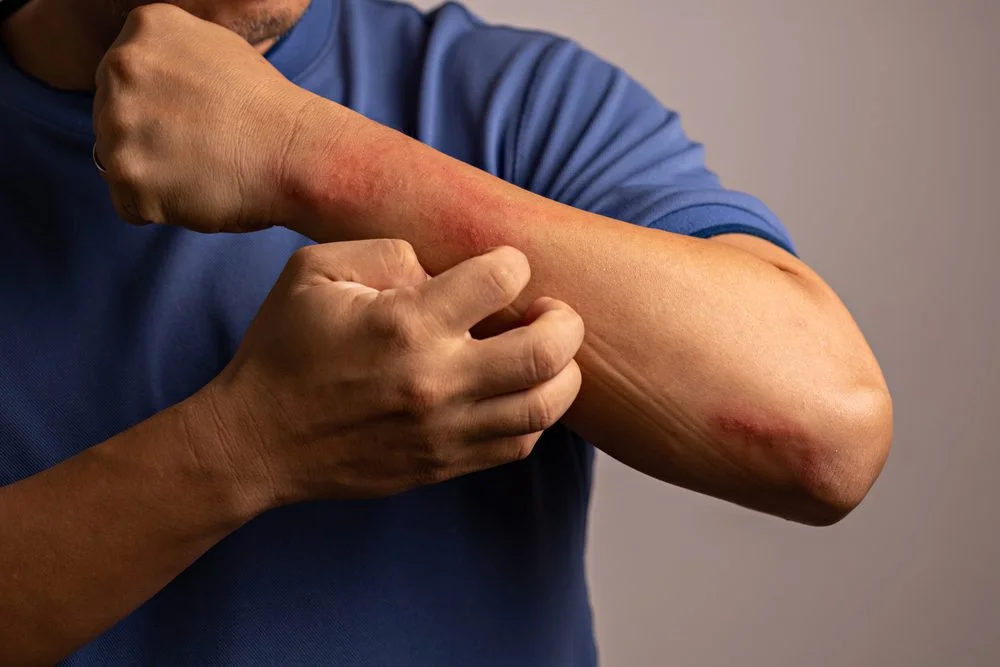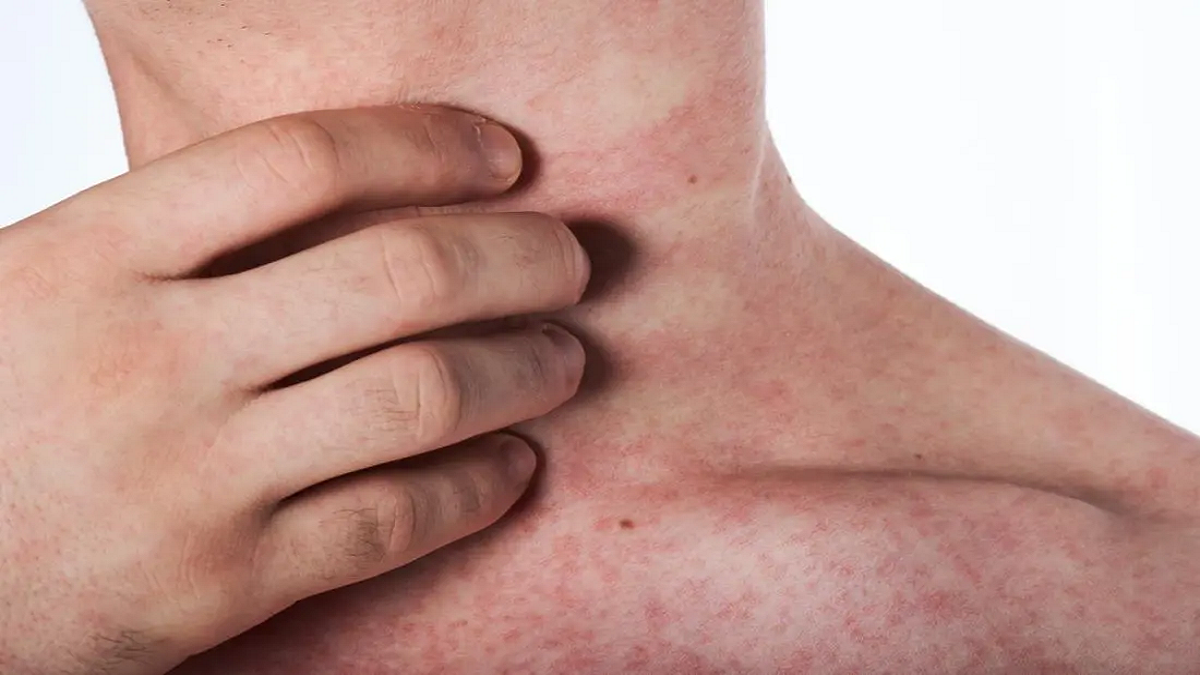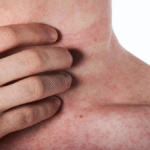Heat rash symptoms may be reduced with the use of self-care methods and home remedies for heat rash, such as oatmeal baths, calamine lotion, and cold compresses. Heat rash may develop anywhere on the body and is sometimes referred to as miliaria, sweat rash, or prickly heat.
It usually resolves within a few days once the skin cools and stays dry. It often manifests as an inflammatory rash that is red or darker than the surrounding skin (depending on skin tone) and has tiny pimples that resemble sweat or acne beads.
Dark skin may make it more difficult to detect the redness or discoloration. Individuals may feel prickly, scorching, itchy, or unpleasant. Although heat rash might go away on its own in a few days, there are at-home remedies that can help reduce irritation and cool the skin.
Beat Heat Rash With These Home Remedies

1. Cold Compress
Cooling the skin is one of the finest home remedies for heat rash. To lessen swelling, irritation, and inflammation, people might apply a cold compress—such as an ice pack or cold cloth—to the affected region.
People should also refrain from using an ice pack on their skin for prolonged periods. Apply a cool, damp compress for 5–10 minutes at a time. If using an ice pack, always wrap it in a towel and avoid direct contact with skin.
2. Cold Bath Or Shower
Heat rash usually goes away on its own when the skin cools down, but taking additional care might help it heal faster and feel better. Bathing in cold or lukewarm water might help calm inflammation and lessen redness. It’s important to cleanse the skin gently while in the bath since clogged pores might make heat rash worse.
Don’t scrape or use harsh soaps, since they might make the skin even more irritated. Keeping the skin clean, dry, and cold speeds up healing and keeps the rash from coming back.
3. Fans Or ACs
Fans and air conditioning are among the top home remedies for heat rash, helping to keep the body cool and the inside of a building pleasant, particularly when it’s hot and humid outside. This is especially crucial for those who are on bed rest since they are more likely to become too hot.
For individuals who exercise in hot weather, safety precautions are vital. Whenever feasible, exercise in an air-conditioned setting to reduce overheating and excessive perspiration. If working out outside, consider covered places or arrange activities during the cooler hours of the morning or evening. These basic steps may help regulate body temperature, minimize pain, and avoid heat-related health complications.
4. Light, Moisture-Wicking Clothing
When your skin is recovering, it is vital to avoid clothing that traps heat, produces friction, or raises sweat, since these factors may intensify irritation and hinder recovery. Opt for light, loose-fitting clothes that let your skin breathe while effectively wicking away sweat to keep the region dry and comfortable.
Specialized synthetic fabrics, such as performance polyesters made for sportswear, are ideal alternatives since they pull perspiration away from the skin, limiting the possibility of additional discomfort.
Cotton, although soft and breathable, tends to retain moisture, which may keep the skin wet and worsen the problem. Choosing the proper textiles helps create a calming environment for your skin, helping it to recuperate quicker and more pleasantly.
5. Oatmeal Bath
Oatmeal is one of the mild and natural home remedies for heat rash that may help relieve irritation, decrease itching, and calm inflammation, making it particularly useful for alleviating heat rash and other minor skin ailments. To use it as a bath treatment, add about one cup of finely ground or colloidal oatmeal to a lukewarm bath and soak for 10–15 minutes.
Ensure the water is lukewarm, not boiling, since excessive heat might aggravate the rash. Alternatively, you may produce a basic oatmeal paste by combining equal parts oats and water until it reaches a smooth consistency. Gently apply the paste to the afflicted areas to ease pain. Both approaches help keep the skin cold, hydrated, and tranquil as it heals spontaneously.
6. Sandalwood
Sandalwood may provide mild cooling and soothing effects, though scientific evidence is limited. It may help ease the burning, stinging, and overall pain frequently associated with the illness. To produce a basic paste, combine two parts sandalwood powder with one part water until you reach a smooth, spreadable consistency.
Before applying it to the rash, conduct a patch test by applying a little quantity to an unaffected region of skin and waiting for roughly an hour to check for any response. If there is no discomfort, carefully apply the paste to the afflicted region. This natural therapy may give cooling relief and help minimize redness and pain while your skin recovers.
Read More: 9 Foods To Keep You Warm
7. Aloe Vera
Aloe vera is one of the top home remedies for heat rash, with calming, antimicrobial, and anti-inflammatory characteristics, making it a great natural cure for heat rash. Its cooling action helps soothe inflamed skin, while its antibacterial characteristics limit the risk of infection in regions where the skin is delicate or injured. Additionally, its anti-inflammatory activity helps lessen swelling, redness, and pain.
To use, apply a small coating of pure aloe vera gel immediately to the afflicted region, carefully rubbing it into the skin. Let it soak naturally for the optimum benefits, and reapply many times a day as required. Using fresh aloe vera directly from the plant or pure, additive-free gel offers optimum efficacy and encourages quicker, more pleasant skin healing.
8. Neem
Neem, also known as margosa, has long been regarded in traditional medicine for its skin-healing powers. It is considered to have antibacterial and anti-inflammatory actions, which may help calm irritation, reduce redness, and minimize the risk of infection in heat rashes and other mild skin problems. Its natural characteristics make it a popular home treatment.
To use neem, combine neem powder with water to form a smooth paste and apply it gently to the afflicted region. Leave it on for a few minutes before washing with cold water. Alternatively, adding neem powder to a warm bath will help soothe wider regions of sensitive skin, boosting relief and facilitating quicker, more pleasant healing.
To Wrap Up
Heat rash is one of the body’s natural warning signs that it is overheated. It happens when sweat glands get clogged, trapping perspiration beneath the skin and producing discomfort, tiny bumps, redness, or itching. While frequently innocuous, it may be painful and is a warning that your body needs to cool down.
Simple preventative steps, such as wearing loose, breathable clothes and avoiding direct sunlight during peak hours, may dramatically minimize the chance of suffering heat rash while outside. Indoors, being in a well-ventilated room is just as vital. Using fans or air conditioning helps regulate body temperature and keeps the skin dry, lowering the possibility of future discomfort.
Home therapies such as chilly baths, soothing applications like aloe vera, sandalwood paste, or oatmeal baths, and moisture-wicking garments help alleviate itching, burning, and overall discomfort. However, if home remedies don’t help or new complications emerge—such as swelling, pain, pus, or fever—seek medical advice.
By paying attention to early indicators of overheating and taking actions to remain cool, individuals may avoid heat rash and safeguard their general well-being. Practicing heat safety, both inside and outdoors, and utilizing easy, natural therapies for relief provides quicker healing and helps avoid recurrence occurrences, keeping the skin healthy and pleasant under hot and humid weather.
FAQ
Q: How can heat rash be avoided?
A: Focus on remaining cool, dressing in breathable clothes, and practicing excellent hygiene to avoid heat rash. Steer clear of excessive perspiration, drink plenty of water, and control your body temperature with fans or air conditioning.
Q: What is the duration of a heat rash?
A: With the right cooling and attention, heat rash—also referred to as miliaria or prickly heat—usually goes away on its own in two to three days. It might take a week or more for more serious instances or those who don’t get better with home care.
Q: Does an allergy cause heat rash?
A: Although you would associate urticaria, or hives, with an allergic response, heat can also trigger these symptoms. These are referred to as cholinergic urticaria or heat hives. Similar to how your immune system combats allergies, some people’s bodies may release the chemical histamine in response to a temperature increase.











